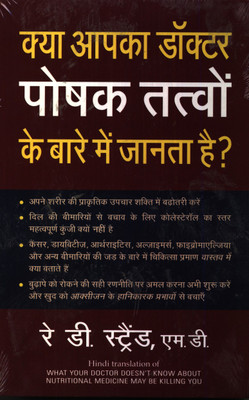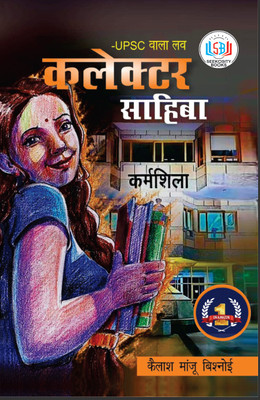
Pakhandi Shiksha Vyavastha aur Netaaon ki Laparvaahi (Paperback, Bajrangi Mandal)
Share
Pakhandi Shiksha Vyavastha aur Netaaon ki Laparvaahi (Paperback, Bajrangi Mandal)
4.8
5 Ratings & 1 Reviewsख़ास कीमत
₹167
₹250
33% off
आपके लिए कूपन
T&C
उपलब्ध ऑफ़र
T&C
T&C
T&C
T&C
Delivery
Check
Enter pincode
डिलीवरी10 अगस्त, रविवार
?
जानकारी देखें
Highlights
- Binding: Paperback
- Publisher: Authors Pride Publisher
- Genre: Social Change
- ISBN: 9788194637219
- Edition: 1, 2020
- Pages: 216
सर्विस
- No Warranty
- कैश ऑन डिलीवरी उपलब्ध?
Seller
जानकारी
This book also becomes important as a sequel to the first book titled "Hindutvvaadiyon ki Giraft mei Dam Todti Skooli Shiksha" because not only has the author made a successful attempt to explain that the entire education system of today, in large contexts, shows that in India the failure of the education system have made the entire project of nation building and person building unsuccessful, which was dreamt by the then national leaders during the struggle for independence. He writes that till now four national education policies have been formed in this country but all of them proved to be unsuccessful in their objectives as their vision was mostly based on western society and their ideology, rather than Indian. He writes that it is important to understand the background of the practice of teaching elementary education to children or anganwadi to children. It is called nursery school in English. This nursery school is a copy of foreign cultures, where the economic, social conditions are different from ours. Aanganwadi maids pass the tenth standard. They do not get any education and training to take care of children. There is no building to teach 40 children. Education takes place in a small room or verandah, where very few students can accommodate. The age of admission of students is 3–4 years, the maturity age of children learning and remembering in the whole world is 5–6 years. In this regard, he writes in one place, the age of entry of children in China is 6 years and there is no nursery or playschool. Infact, there is no pre-primary education system. Is China a backward country in terms of education? The author has tried to explain in great detail, quoting statements from Indian history, myths and academics to Gandhi, Ambedkar, Nehru today, that the failures of our education system have not only weakened the soul of the nation instead it has pushed the country into a trough of severe backwardness and inferiority complex. Every year, a huge army of engineers, technicians and graduates come out of our institutions, but due to half-incomplete education, they are disqualified in most jobs and nation-building work, hence the huge army of unemployed system of the entire country has resulted into a crisis and the nation has reached a dangerous point. For this, the leaders of Dalit and backward classes, who want to fight against Brahminism, the communists who want proletarian revolution must be blamed. We must blame everyone equally, because they can never succeed in their objectives without fighting for a democratic education system. In the present crisis of today, when unemployment has reached its highest level in the last 75 years, this is an important book on the gross discrepancies prevailing in the entire education system.
Read More
Specifications
Book Details
| Publication Year |
|
| Book Type |
|
| Number of Pages |
|
Contributors
| Author Info |
|
Warranty
|
In The Box
|
रेटिंग और रिव्यू
4.8
★
5 Ratings &
1 Reviews
- 5★
- 4★
- 3★
- 2★
- 1★
- 4
- 1
- 0
- 0
- 0
5
बाजार में सबसे अच्छा !
प्राथमिक शिक्षा पर बहुत अच्छी किताब ।
READ MOREDeepak Kumar
Certified Buyer, Patna
सितंबर, 2020
1
0
Report Abuse
Safe and Secure Payments.Easy returns.100% Authentic products.
Back to top







